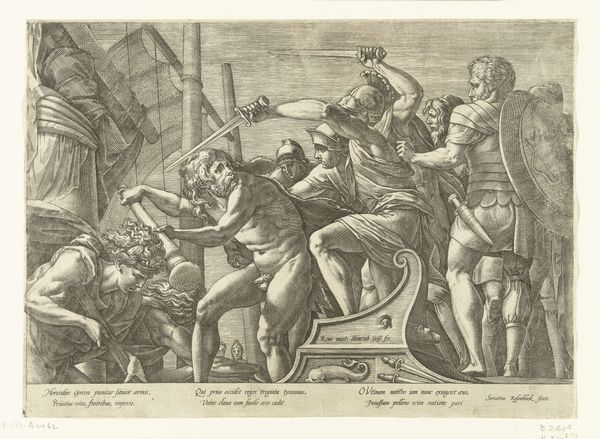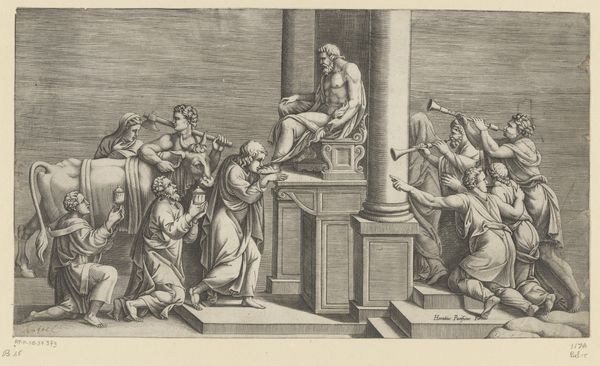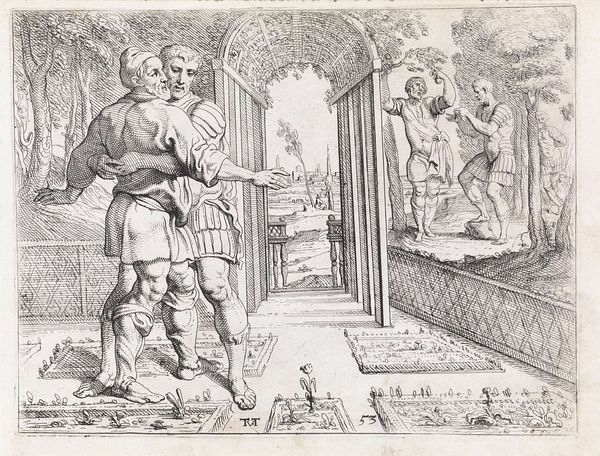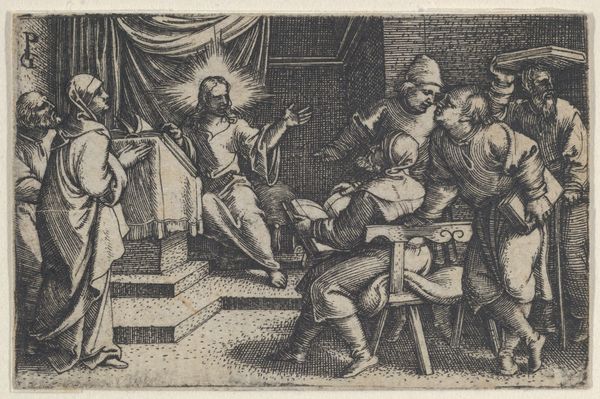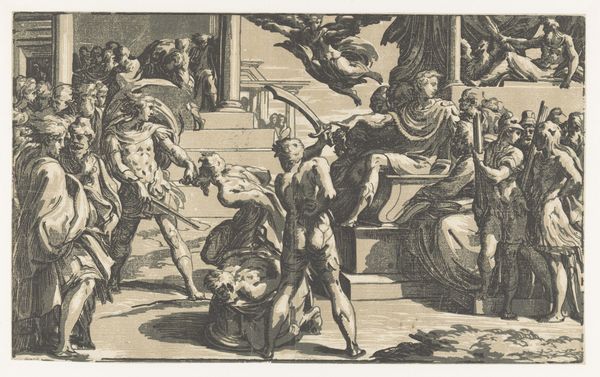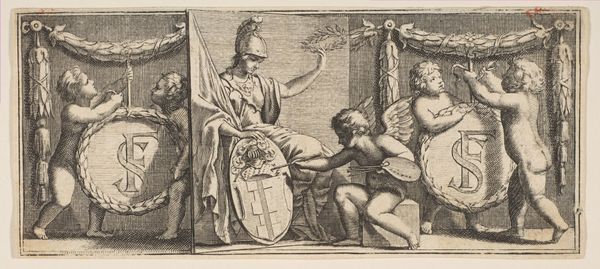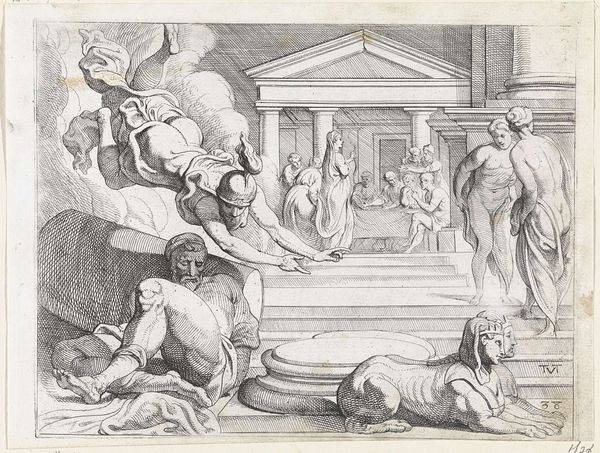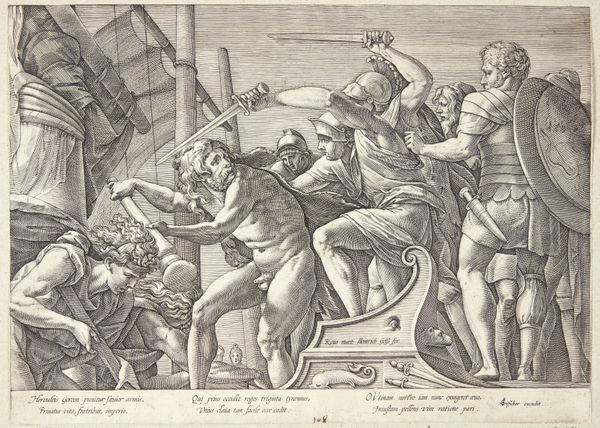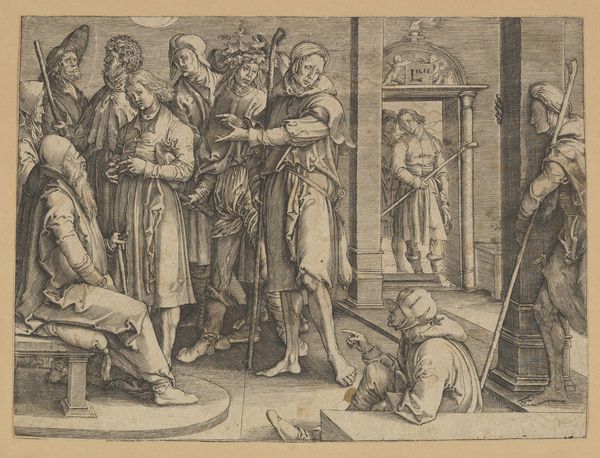
The Risen Christ, from Old and New Testaments 1550
0:00
0:00
drawing, print, engraving
#
drawing
# print
#
figuration
#
11_renaissance
#
line
#
history-painting
#
engraving
Dimensions: Sheet: 4 5/8 × 6 1/16 in. (11.8 × 15.4 cm)
Copyright: Public Domain
Editor: Here we have "The Risen Christ, from Old and New Testaments," an engraving by Augustin Hirschvogel, created around 1550. It has a rather dramatic feel; Christ is emerging from a tomb with startled soldiers around him. What do you see in this piece? Curator: I see a powerful visual statement deeply embedded in its historical context. The Renaissance was a time of immense social and religious upheaval, wasn't it? This image participates in discourses about authority. Christ’s rising, visualized through linear precision, isn’t just a religious moment; it’s a challenge to earthly power structures. Editor: A challenge? How so? Curator: Well, think about it. The soldiers, symbols of Roman authority, are depicted as weak and overwhelmed. Hirschvogel is engaging with Reformation ideas here, the democratization of religious experience. What's more subversive than depicting authority figures as vulnerable in the face of faith? This speaks to a burgeoning sense of individual agency against established hierarchies. Editor: That's an interesting way to look at it; the focus on the vulnerability of authority instead of the power of Christ. Curator: Precisely. And the medium itself – engraving, a technique allowing for wider distribution – facilitates the spread of these challenging ideas. This wasn't just art for the elite; prints had the power to disseminate alternative theologies amongst broader audiences, fueling change. How does considering its role in social change alter your perception of the artwork? Editor: I suppose it makes me think about how art can actively shape thought. Thanks, I see it much differently now! Curator: Exactly, and by situating such an image in the nexus of social and religious ferment, it prompts us to consider not only its artistic merit but its revolutionary potential.
Comments
No comments
Be the first to comment and join the conversation on the ultimate creative platform.
